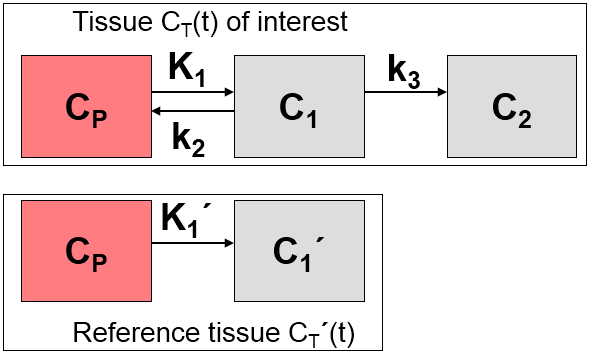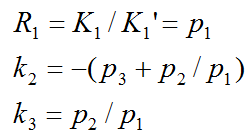Model Configuration and Assumptions
The MP4A RLS (Nagatsuka) model has been developed for the non-invasive quantification method (RLS) of the acetylcholinesterase (AChE) activity in the human brain from measurements with the 11C-MP4A acetylcholine analog [1]. In contrast to reference methods for receptor tracers which use a reference devoid of specific binding, the present method uses a reference with very high AChE activity which immediately traps the tracer so there is no washout. CT(t) is the TAC from a cortical target region, and CT'(t) the TAC from the reference region (striatum or cerebellum). k3 represents the rate of tracer hydrolysis by AChE.

Operational Model Curve
By applying the method of Blomqvist, the following multi-linear equation is derived

It can be fitted to CT(t) using multi-linear regression, yielding three regression coefficients from which three parameters of interest can be calculated:

Parameter Fitting
After switching to the MP4A RLS (Nagatsuka) model a suitable reference region must be selected. The findings in different publications indicate that cerebellum yields more stable results than striatum, most likely due to the higher impact of motion on the signal from the small striatum than the large cerebellum.
While the regression coefficients represent the fitting parameters, the resulting rate constants are shown in the derived parameter section.
Reference
1.Nagatsuka Si S, Fukushi K, Shinotoh H, Namba H, Iyo M, Tanaka N, Aotsuka A, Ota T, Tanada S, Irie T: Kinetic analysis of [(11)C]MP4A using a high-radioactivity brain region that represents an integrated input function for measurement of cerebral acetylcholinesterase activity without arterial blood sampling. J Cereb Blood Flow Metab 2001, 21(11):1354-1366. DOI